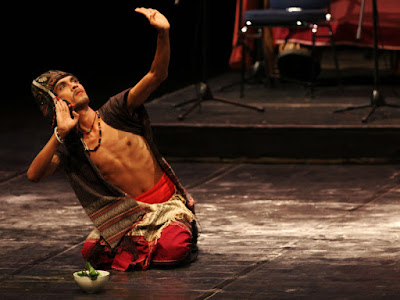DanceTor Tor dance became one of the most prominent art in Batak Toba culture. Manortor
(dance, language Batak Toba) is a symbol of gratitude to Mulajadi
Nabolon form, the creator god of the universe, and respect for hula in
the concept of their kinship. Therefore, this dance is usually performed in the ceremonies, or in traditional ceremonies, such as weddings.Music ArtA number of musical instruments is also a part in the rituals and ceremonies in the culture of the Batak Toba. Two types of musical ensembles, gondang Sabangunan and gondang Hasapi a traditional musical instrument most frequently played. According to mythology ethnic Batak Toba, both these instruments
belong to Mulajadi Nabolon, so it must be played to submit a request to
the god.Arts & CraftsMartonun,
or skill in making kais Ulos with traditional looms, is one of the
craft in the tradition of Batak Toba, which up to now can still be found
in the interior of the island of Samosir and other areas around Lake
Toba. Batak Toba perform a variety of craft in accordance with the role and
function in the structure of customs and religion that they believe.Literary ArtsThere are many literary art developed in public life Batak Toba, including oral literature and literary writing. Various folklore, such as the occurrence of Lake Toba and Hanging Rock, a legend who is still able to hear. Rhyme-rhyme called umpasa also in Batak Toba culture, which became the ethnic local wisdom. All the literary arts have philosophical meaning in their lives.ArtSculpture and sculpture became the main skills in the traditional fine arts are alive in Batak Toba. Carvings are gorga or ornament their custom home, be evidence of sculptural beauty of the Toba Batak society. Meanwhile, the sculpture can be seen from many traditional tools, such
as Sior and hujur (arrow), Lösung gaja (large dimple), as well as
parpagaran and Sigale-gale (a tool to summon magic powers).All of the traditional arts in Toba Batak culture that is until now become an integral part of their lives. They keep on keeping it alive in the order of customs and religious life of the community. It
was also later became an attraction in the tourism world, ie, as
entertainment for the foreign tourists, who had probably never seen one
- Blogger Comment
Subscribe to:
Post Comments
(
Atom
)

0 comments:
Post a Comment